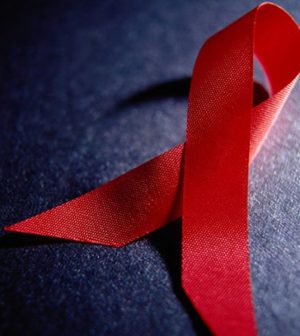- Navigating Your Midlife Crisis: Embracing New Possibilities
- City Raccoons Showing Signs of Domestication
- Mapping the Exposome: Science Broadens Focus to Environmental Disease Triggers
- One Week Less on Social Media Linked to Better Mental Health
- Your Brain Changes in Stages as You Age, Study Finds
- Some Suicide Victims Show No Typical Warning Signs, Study Finds
- ByHeart Formula Faces Lawsuits After Babies Sickened With Botulism
- Switch to Vegan Diet Could Cut Your Greenhouse Gas Emissions in Half
- Regular Bedtime Does Wonders for Blood Pressure
- Dining Alone Could Mean Worse Nutrition for Seniors
Is the AIDS Epidemic Winding Down in the U.S.?

(HealthDay News) — Could the United States be turning the corner on the AIDS epidemic?
New research suggests it’s possible.
If certain targets are met, the rate of new infections may be down to 12,000 a year by 2025, which would mark a transition toward the end of the HIV/AIDS epidemic, the researchers said.
“Achieving these targets will require a sustained and intensified national commitment to ending the epidemic,” said study author Dr. Robert Bonacci, from Brigham and Women’s Hospital in Boston.
“But if the U.S. does achieve a reduction to 12,000 new HIV infections by 2025, it could mark an important turning point in the U.S. HIV epidemic: a decline in the total number of people living with HIV in the U.S., and the beginning of the end of the U.S. AIDS epidemic,” he said in a hospital news release.
It’s crucial that the goals of the U.S. National HIV/AIDS Strategy (NHAS) are met. The goals for 2020 include: 90 percent of people living with HIV knowing their status; 90 percent receiving quality care; and 90 percent of HIV patients on antiretroviral therapy achieving suppression of the virus.
Rates of 95 percent would have to be achieved by 2025, the researchers said.
It’s especially important that these targets are reached among groups hardest hit by HIV, including gay men, young people, transgender persons, black and Hispanic Americans and those who live in southern states.
“Providing HIV services to our most disproportionately affected communities is fundamental to future success,” said study senior author David Holtgrave, from Johns Hopkins Bloomberg School of Public Health.
“In an era of limited funding and competing priorities, it is critically important that we intensify our national commitment to addressing the HIV epidemic over the next decade,” he added.
The research was published online May 15 in the American Journal of Preventive Medicine.
More information
The U.S. Centers for Disease Control and Prevention has more on HIV/AIDS.
Source: HealthDay
Copyright © 2025 HealthDay. All rights reserved.










